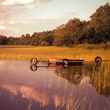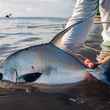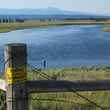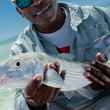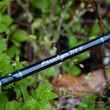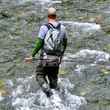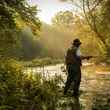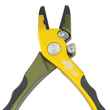There was no denying it the day was going downhill. I was fishing the Wairau River, a pristine wilderness stream that rose in the evergreen-blanketed Saint Arnaud Range on New Zealand’s South Island, then wound and snaked its way through narrow gorges and valleys for 150 kilometres before reaching the Pacific. It was a gorgeous late-summer day, with temperatures in the 70s, not a cloud in the sky. I was standing in water so clean and pure you could drink it; 20 yards ahead, water was cascading through as pretty a riffle as you’d ever want to see, flowing into a deep, azure-blue turn pool. Such pools, as I’d discovered in the past few hours, often held at least one trophy brown trout, fish that averaged 4 pounds and went up to 8 or 9.
Behind me, my guide, Paul van da Loo, wiped a grimace off his face, and remarked, “Well, let’s hike up to the next pool. That fish you just missed isn’t coming back.”
And so it had gone that morning. In the first two pools, I had struck too slowly when my dry fly strike indicator suddenly disappeared beneath the water, the trout below spitting out my No. 18 gray nymph well before my reaction. Then, at the next pool, I piled up my 18-foot leader right on top of a trout sitting behind a midstream boulder, sending him fleeing from the pool as if the Forces of Darkness were attacking. Later, I lined another fish. When I finally did hook one, a monster that had to go at least 7 pounds, his downstream run out of the pool was so powerful that I broke him off in seconds.



